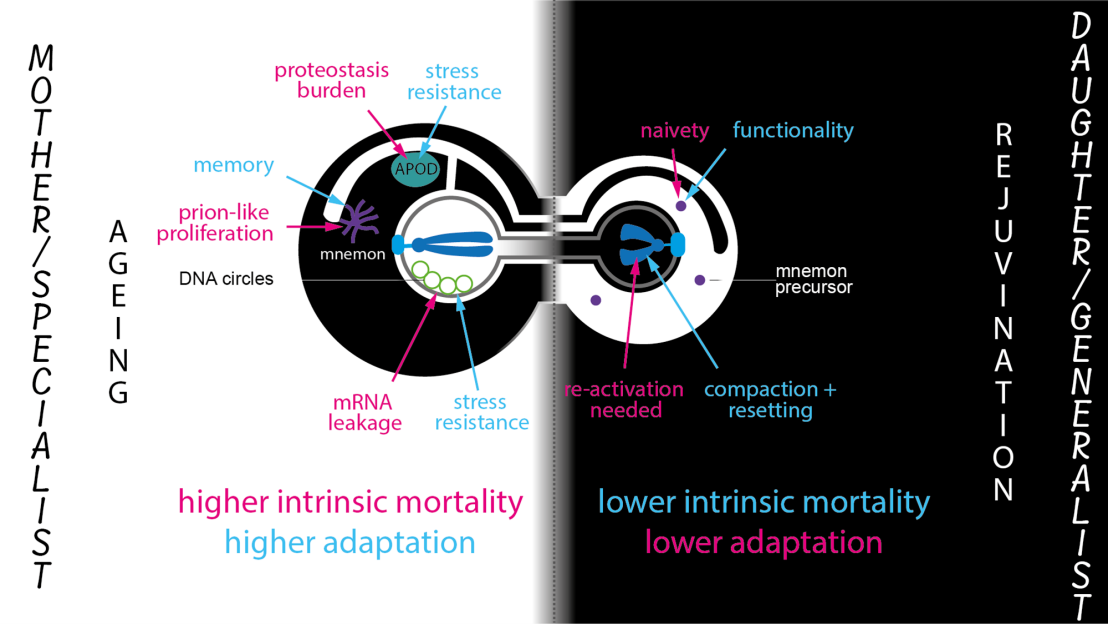The Yin and Yang of replicative aging and rejuvenation
Members of the Barral lab discuss recent findings and examine the evolutionary forces influencing the mechanisms of replicative aging and rejuvenation in an opinion paper just published on “Current Opinion in Genetics & Development”.

The opinion piece explores the concepts of replicative aging and rejuvenation in budding yeast, primarily S. cerevisiae, highlighting how these processes are not merely detrimental but also offer adaptive advantages at both individual and population levels.
Yeast mother cells age progressively with each successive daughter cell they produce, eventually leading to their death. This aging is driven by asymmetric cell division during mitosis, where aging factors are retained by the mother cell. Daughter cells are born rejuvenated, recovering a full lifespan potential regardless of their mother's age. This rejuvenation occurs through two main mechanisms: the confinement of aging factors to the mother cell and the erasure of aging determinants in the daughter cell.
Aging and rejuvenation are suggested to be adaptive strategies that provide benefits to both mother and daughter cells. The article proposes that this interplay allows yeast to combine "specialist" and "generalist" strategies at the population. Mother cells (specialists) accumulate aging factors, some of which (like mnemons and open chromatin) can offer adaptive advantages, such as increased stress resistance or the ability to amplify genes beneficial for specific environments (e.g., under glucose starvation). This leads to higher intrinsic mortality but higher adaptation. Daughter cells (generalists) are rejuvenated and start with a "naïve" state, making them highly adaptable to new environments. This results in lower intrinsic mortality but lower initial adaptation.
Asymmetric division facilitates the "domestication" of prion-like mechanisms, allowing cells to use self-templating proteins (mnemons) to encode information and support the mother cell's specialization without freely propagating these traits throughout the population like prions.
A future challenge emerges and consists of understanding how aging is evolving beyond it being solely a "curse". Future research will explore how conditional aging relates to specialization and if processes observed in yeast, such as the relationship between nuclear pore complex organization and aging, can be generalized to other organisms, including humans.
Link to the paper in external page "Current Opinion in Genetics & Development".